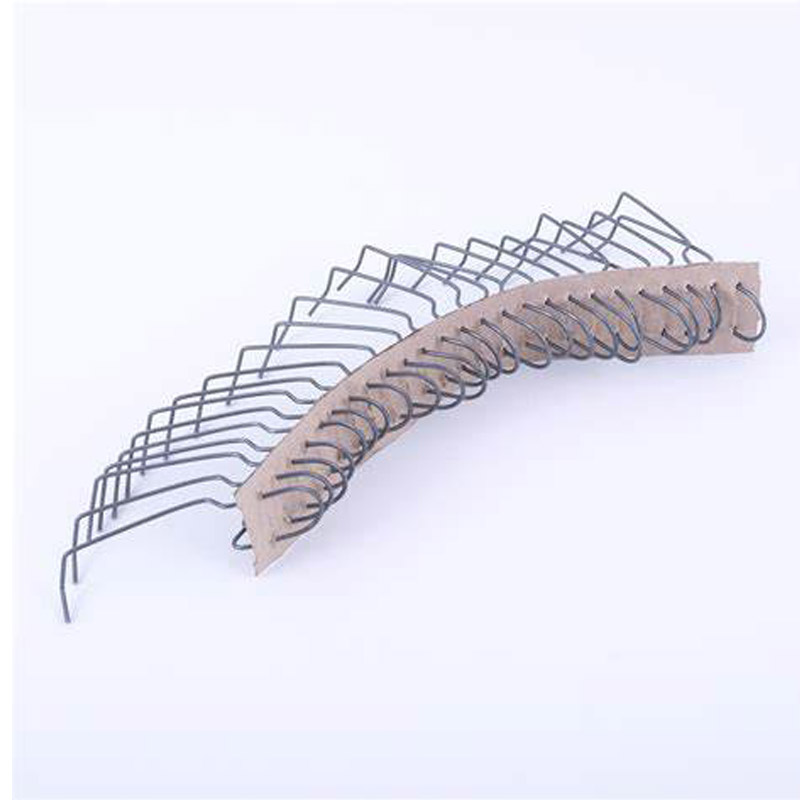
- Mobile Phone
- +8613931874955
- sales@cntcmetal.com
extension springs
Understanding Extension Springs Mechanics and Applications
Extension springs are vital components in various mechanical systems, serving an essential role in providing tension, energy storage, and the ability to return to their original shape after deformation. Unlike compression springs, which are designed to endure forces that compress or squeeze them, extension springs are engineered to absorb and store energy when they are stretched. Their design and functionality play a critical role in many everyday applications, making them integral to numerous industries.
The Mechanics of Extension Springs
At its core, an extension spring is a type of helical spring that is designed to stretch when a load is applied. They are typically made from high-carbon steel or stainless steel, offering great strength and durability. The spring is formed by winding a wire into a helical shape, creating coils that are close to each other. The tension in the spring is generated when external forces pull on its ends, causing it to elongate.
The amount of force required to stretch an extension spring is determined by Hooke's Law, which states that the force exerted by a spring is proportional to its extension. This means that the more the spring is stretched, the more force it exerts in the opposite direction. This unique characteristic makes extension springs ideal for applications where resistance to pulling forces is required.
Common Applications of Extension Springs
Extension springs find their applications in a variety of fields. Here are some notable uses
1. Automotive Industry In vehicles, extension springs are commonly used in mechanisms like hoods, doors, and seats. They assist in closing or opening parts smoothly and can also be found in suspension systems to absorb shocks and maintain stability.
2. Home Appliances Many household appliances utilize extension springs to function effectively. For example, washing machines often incorporate these springs to maintain tension in drive belts, ensuring efficient operation.
extension springs

3. Electronics In various electronic devices, extension springs provide the necessary force to maintain components in place or actuate mechanical movements. For instance, they can be found in printers, where they help in the movement of mechanical parts.
4. Industrial Machinery Extension springs are ubiquitous in the machinery used in factories and workshops. They are employed in conveyor systems, equipment brakes, and clamps, enhancing performance and safety.
5. Fitness Equipment In fitness gear, extension springs are utilized to create resistance, allowing users to perform a wide range of exercises. They are essential in devices like resistance bands and various home gym machines.
Factors to Consider When Selecting Extension Springs
When choosing extension springs for a specific application, several factors must be considered
- Material The choice of material can affect the spring's strength, temperature resistance, and corrosion resistance. - Dimensions The length, diameter, and coil thickness of the spring need to be tailored to the specific requirements of the application. - Spring Constant This is a crucial factor that determines how much force is necessary to stretch the spring a certain distance. - End Hooks The design of the hooks at the ends of the spring can impact fitting and installation in the intended mechanism.
Conclusion
Extension springs are a remarkable example of engineering that showcases how simple components can achieve complex functions. Their ability to provide tension and absorb energy makes them indispensable in many applications, from everyday household items to critical machinery in industry. Understanding their mechanics and applications can help in selecting the right spring for any project, ensuring efficiency and effectiveness in every mechanical design. The future will likely see continued innovation in spring technology, further enhancing their performance and expanding their realm of applications.
share:
-
Why Sacrificial Formwork Is Redefining Underground ConstructionNewsJun.06,2025
-
The Structural Dynamics of Modern Concrete: How Snake Spacers Revolutionize Flexible ReinforcementNewsJun.06,2025
-
Snake Spacers Smart-Lock Concrete Reinforcement with Surgical PrecisionNewsJun.06,2025
-
Snake Spacers: Reinforcement Precision for Modern Concrete ProjectsNewsJun.06,2025
-
Snake Spacers Powering Concrete's Structural DNANewsJun.06,2025
-
Slither into Success: Snake Spacers' Precision Bite for Unbreakable ReinforcementNewsJun.06,2025
-
Sacrificial Formwork: Building Stronger, Faster, and Safer StructuresNewsJun.06,2025



















